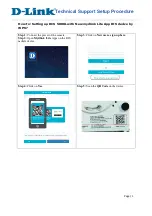
WatchGuard AP330 Hardware Guide
Notices
All WatchGuard products are designed and tested to meet strict safety requirements. These requirements
include product safety approvals and other global compliance standards. Please read these instructions
carefully before operating the product, and refer to them as needed to ensure the continued safe operation of
your product.
For patent information, please visit
http://www.watchguard.com/patents
Safety Warning
If protective earthing is used as a safeguard, the instructions shall require connection of the equipment
protective earthing conductor to the installation protective earthing conductor (for example, by means of a
power cord connected to a socket-outlet with earthing connection). To meet safety and electromagnetic
interference (EMI) requirements, you must make sure the power source is connected to earth ground before
you connect power to the AP.
Power Adapter Requirements
This product is intended to be supplied by a Listed Power Adapter or DC power source marked “L.P.S.” (or
Limited Power Source or PS2) rated 12V DC, 2A minimum, maximum ambient temperature (Tma)=40°C, or
supplied by a Listed PoE Adapter marked “L.P.S.” (or Limited Power Source or PS2) rated 54V DC, 0.6A
minimum, maximum ambient temperature (Tma)=40°C. For more information regarding approved power
sources, please contact WatchGuard Technologies.
FCC Certification
This device complies with part 15 of the FCC Rules. Operation is subject to the following two conditions: (1)
This device may not cause harmful interference, and (2) this device must accept any interference received,
including interference that may cause undesired operation.
This equipment has been tested and found to comply with the limits for a Class B digital device, pursuant to
part 15 of the FCC Rules. These limits are designed to provide reasonable protection against harmful
interference in a residential installation.
This equipment generates, uses and can radiate radio frequency energy and, if not installed and used in
accordance with the instructions, may cause harmful interference to radio communications. However, there
is no guarantee that interference will not occur in a particular installation. If this equipment does cause
harmful interference to radio or television reception, which can be determined by turning the equipment off
and on, the user is encouraged to try to correct the interference by one or more of the following measures:
n
Reorient or relocate the receiving antenna.
n
Increase the separation between the equipment and receiver.
n
Connect the equipment into an outlet on a circuit different from that to which the receiver is
n
connected.
n
Consult the dealer or an experienced radio/TV technician for help.
WatchGuard Technologies, Inc.
15








































